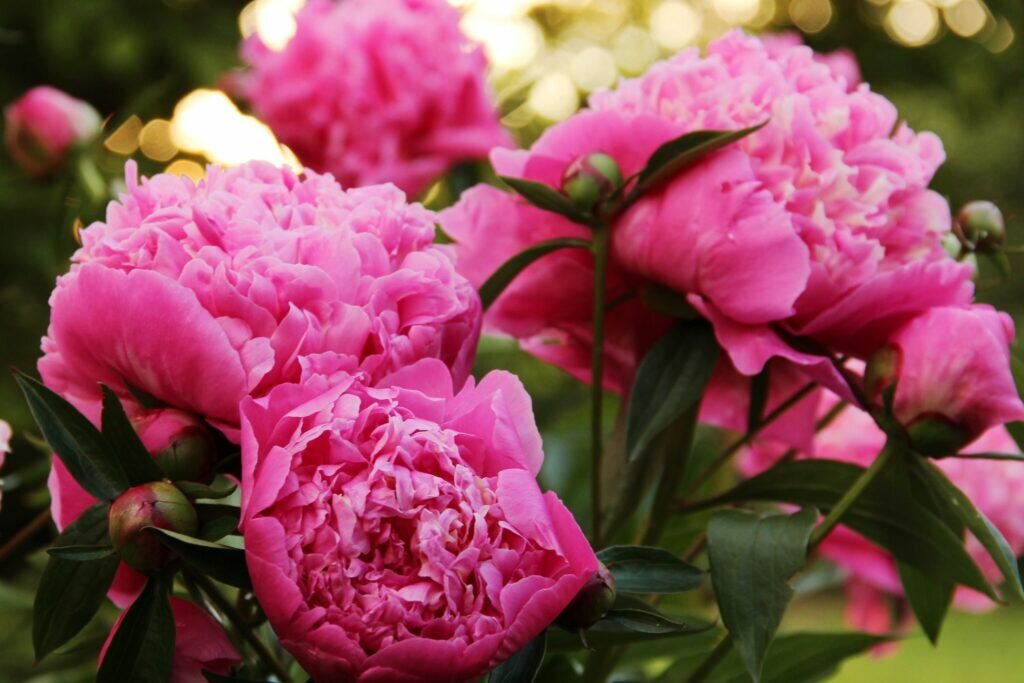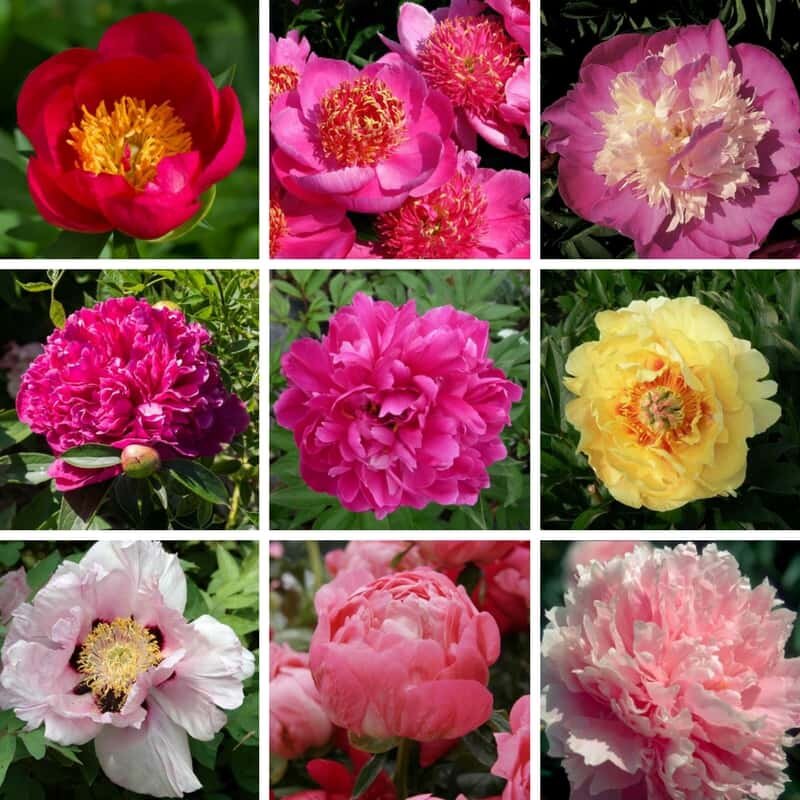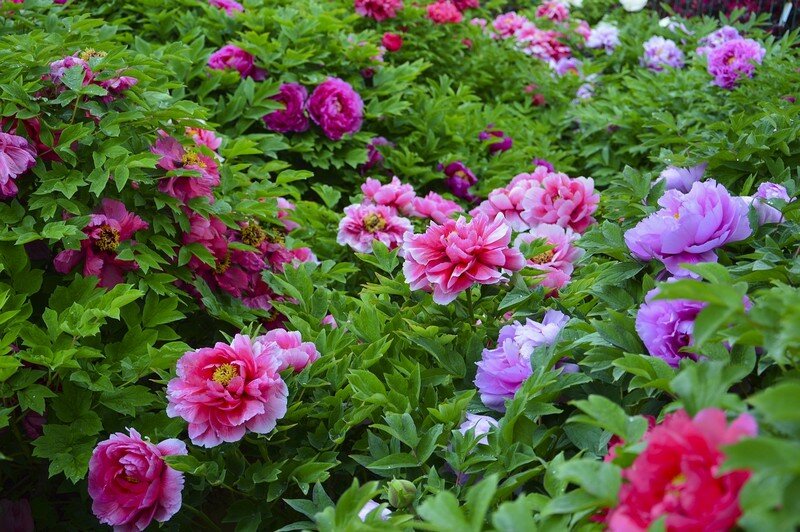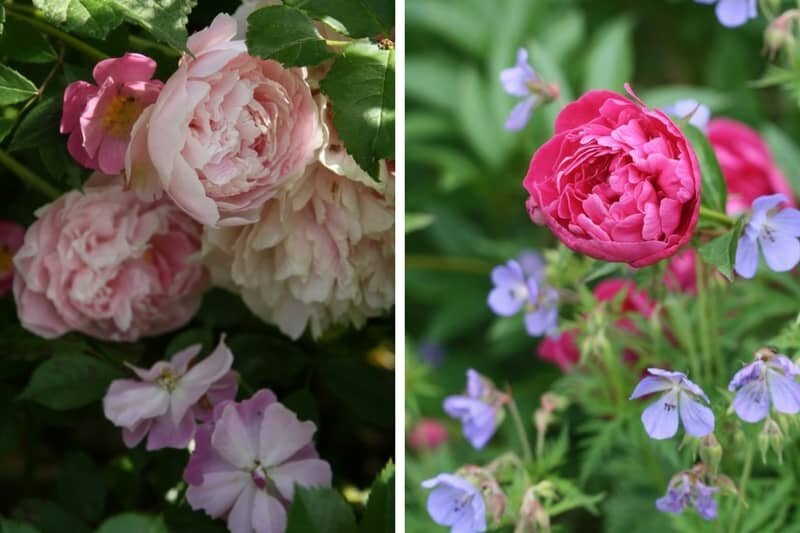
The peony or Paeonia has not finished bewitching us with its large flowers of various shapes and colors. This is what makes it so charming!
Its generous flowering in spring is accompanied by great ease of cultivation, excellent hardiness and good disease resistance … not to mention that some varieties are deliciously scented. It is a beautiful with crazy charm which certainly does not bloom for long but comes back faithfully for many years.
HERBACEOUS PEONIES, TREE PEONIES AND HYBRIDS
- Herbaceous peonies (Paeonia lactiflora) are the best known. I particularly like them for their longevity and their easygoing side. A pillar of ancient gardens, they flourish both in ancient gardens and in contemporary gardens. Personally, I prefer them single or semi-double or even with anemone heart if I want a touch of fantasy. So they blend in rather well with the decor of my naturalistic garden. Well, I admit, I also have doubles. Moreover, one of them comes to me from my great-grandmother’s garden, passed down from mother to daughter, from gardener to gardener. As much to tell you that I want it!
- Tree peonies (Paeonia suffruticosa) form majestic shrubs with large flowers topped with a pretty bouquet of golden stamens. They grow very slowly but then what a spectacle after a few years! I started planting it 5 years ago. First, a Paeonia delavayi var. lutea from a seedling and gift from a friend, which I waited patiently for 3 years. I particularly admire its young foliage tinged with copper in spring, finely cut and its pure yellow flowers. Another tree peony joined the garden last year, Paeonia suffruticosa ‘Charming Garden’ but it has not yet flowered. I will know how to be patient!
- Finally, Itoh hybrids are the result of crosses between a herbaceous peony and a shrub. They are characterized by exceptional robustness and features specific to its two origins. The flowering period is longer, the beauty of the foliage is maintained throughout the season and the range of colors is varied. I haven’t planted any yet, but it won’t be long.
A MULTITUDE OF SHAPES AND COLORS
Peony flowers can be classified into several categories, knowing that the line between one or the other is not always clear. Especially since the shape and color of the flowers can vary from year to year depending on climatic conditions and soil quality.
That said, we can distinguish the simple (P. ‘Flame’), the Japanese (P. ‘Neon’), the anemones (P. Gay Paree ‘), the crowns (P.’ Félix Crousse), the globular (P. Karl Rosenfield), semi-doubles (P. ‘Golden Treasure and’ Lilac ‘) and doubles (P.’ Coral Sunset and ‘Sarah Bernardt’).

PERFUMED FLOWERS
Peonies are famous for their fragrance. They are famous in perfumery for their perfumes with accents of rose or lily of the valley. Be careful, not all of them smell! In general, double-flowered peonies are more fragrant than single-flowered peonies, but there are many exceptions. Some of the most strikingly scented strains include: ‘Myrtle Gentry’, Alice Crousse ’, White Cap’, Duchesse de Nemours ’and Alice Harding’.

Besides, the peony of my grandmother smells divinely good! When I feel the rain coming, I pick a bouquet to enjoy the flowers and its fragrance in the house.
OR DOES THE PEON PLEASE?
The hardiness of peonies is no legend! They don’t mind the cold and with a few exceptions, they grow wild at altitudes where frost is not uncommon. At worst, a few branches will have suffered but they will grow back even more the following spring. On the other hand, late frost can have repercussions on flowering. I had the case this spring precisely, with the frosts in May while the buds of my Paeonia delavayi var. lutea were already well formed. Sheltered near a wall, most of its buds turned black, some survivors gave somewhat misshapen flowers. In the rest of the garden, the herbaceous peonies simply did not bloom.
The choice of location is a key element in the success of the plantation. Peonies like the sun, otherwise flowering can suffer. However, the ideal exposure will vary depending on your location. Indeed, in Mediterranean regions, it is best to avoid full sun in the early afternoon. An eastern or south-eastern exposure is preferable. Likewise in regions where late frost is common (like at home in the Ardennes), prefer a western exposure to prevent the first rays of the morning sun from causing too rapid a thaw and affecting the quality of flowering. Everywhere else, full sun exposure will be chosen. Note that a minimum of half a day of sun is necessary for good flowering.
Remember that peonies dread soggy soil, so it is important to plant them in well-drained soil. In my clay soil, I added a lot of humus (homemade compost, horse manure … an 8 year old vintage via my neighboring breeders), addition of crushed material over the years to improve the soil. You can also add gravel or pozzolana in the bottom of the planting hole. They are greedy plants that don’t like the competition. Mix good quality compost or well-rotted manure with the planting soil. Be careful not to bury them too deeply: 2 to 3 cm of soil must cover the buds, no more! Finally, they do not like to be moved, so choose carefully the location of your future acquisition otherwise it may sulk 2 or 3 years before blooming again.
Maintenance then comes down to removing dead wood and dry or damaged parts when the buds start to swell at the end of winter for shrubs and a simple cleaning of the dry parts in March for grasses. Child’s play !
TIPS FOR A GOOD FLOWERING

The first flowering of herbaceous peonies can occur between the first and third year after planting. It depends on the size of the plant. If she has a root and an eye, it will easily take three years for her to flower. On the other hand, if she has four to five roots with three or four swollen eyes, there is a good chance that she will flower in the first spring if planted under the right conditions.
The same is true for tree peonies but the probability of flowering is a little lower in the first two years.
A supply of humus is necessary each autumn. I put a good amount of well-rotted manure all around the plant. Then I bury it the following spring during a hoeing. Peonies appreciate a supply of potash which promotes flowering. On the other hand, be aware that nitrogen should be limited because it weakens the foliage and promotes the development of botrytis. So choose a fertilizer accordingly or do like me, a little wood ash each spring and you’re done!
Some peonies with fragile stems and particularly heavy flowers need support. It comes in the form of a metal circle with stakes for driving into the ground. The foliage once developed completely hides the device. It is simple and efficient !
SUCCESSFUL WEDDINGS
Peonies lend themselves well to planting in beds or mixed borders. I find them wonderful with smaller flowers that highlight them as for example with Cirsium rivulare ‘Atropurpureum’ or perennial geraniums but also with Irises, lupines, Centaurea montana, poppies, roses, lady’s mantles, delphiniums, alliums, anthemis for an English garden, romantic as you wish, or even with colorful foliage, in particular the purple of Sambucus nigra ‘Black Beauty’ or ‘Black Lace’.



